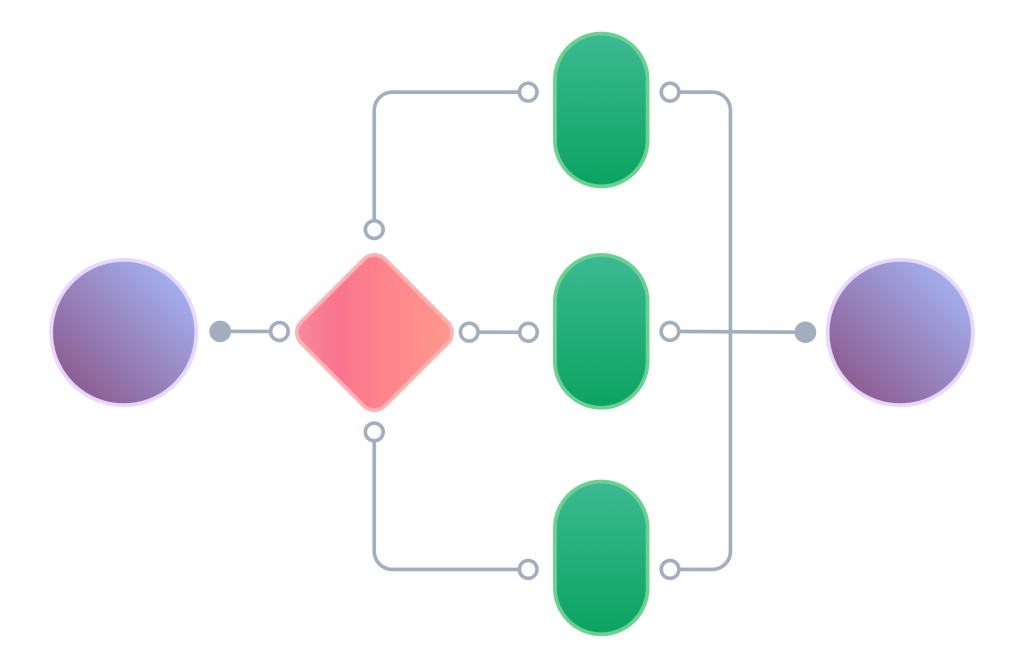Most business owners have the desire or need to automate repetitive tasks and eliminate redundant tasks, freeing employees to concentrate on delighting customers, generating ideas, or performing activities that promote innovation and business growth. This applies to both small business owners and large enterprises alike.
One way of doing this is through business automation, which enables organisations to automate business processes and complex workflows.
What is a workflow?
A workflow is a sequence of steps laying out the operations, resources, and personnel required to implement various business processes.
Workflows provide a framework that enables a business to organise work in such a way as to minimise manual tasks and repetitive processes, thereby increasing efficiency, promoting more seamless communication between stakeholders, and freeing employees to perform more high value tasks.

How do small businesses manage workflows?
Small business workflows cover a range of activities and business processes. For example, if you’re a small business owner who deals directly with consumers, one of the tasks you may need to create custom workflows for is Customer Support. Here, your workflow management tasks may include facilitating seamless communication between your marketing team, sales reps, and support staff, and providing easy access to customer information from your Customer Relationship management or CRM tool, to save each support employee’s time in moving cases from initial contact to resolution.
Even this simple example illustrates that small business owners must occasionally deal with complex workflows that consist of many moving parts. Organising these various workflow processes takes a degree of planning. A general procedure for designing workflows for small businesses takes the following form:
1. Design the layout for the workflow

Decide what tasks need to be done, the processes that are involved, and what resources, staff, and time periods that each process takes. This design stage can be greatly simplified by using workflow automation software.
Workflow software will typically include a form design tool with templates that provide pre-designed fields and workflows that you can customise to automate repetitive tasks, without needing coding knowledge.
2. Apply relevant business rules

Using business logic relevant to each stage of the workflow, you can create custom rules to speed up your business processes. These rules might, for example, eliminate manual data entry to minimise human error, or configure the automation software to automate repetitive tasks, reducing the labour burden on your workers, and leaving happy employees free to contribute more actively to the small business.
3. Configure and implement the workflow
Performing a few test runs of your workflows will help in establishing whether all the necessary processes are in place, and in the right order. Workflow management software may include monitoring and evaluation tools to assist in this assessment, while workflow automation software should provide features for tweaking the workflow elements to achieve optimal performance.

4. Configure final actions for your workflows
During this final stage, small businesses can set rules and conditions for what happens when a workflow ends. Workflow automation systems will typically provide features for implementing final actions, such as automated emails or phone calls to notify staff when a business process is complete.

Is automation necessary for small businesses?
As a small business owner, you must struggle to survive and thrive in an increasingly competitive environment that may include large enterprises with significantly more resources than your own organisation can command. In this atmosphere, saving or losing time equates to profit or loss – and can mean the difference between success and failure for small businesses. Anything that reduces the time spent on repetitive tasks and business processes is therefore a benefit – and workflow automation fits this bill.
With even light automation, small businesses can speed up operations, reduce labour costs, and increase profits.
Workflow automation enables small businesses to introduce automated processes that reduce their labour requirements and overhead costs. Automation software and workflow management can also help streamline business processes and increase worker productivity.
In this age of remote and hybrid work, workflow automation for small business applications can facilitate the work of remote employees and teams.
For example, with workflow automation software enabling seamless communication for a marketing and sales team, marketing and sales reps can access the advanced features of the workflow software from multiple locations to capture leads and take the necessary steps to nurture each new prospect.
At a time when 86% of buyers are willing to pay more for a great customer experience, workflow automation can help small business owners to enhance the quality of their product or service delivery and support services. Behind the scenes, workflow software can assist small businesses with critical aspects of their supply chain and vendor management, with automated processes for making purchase orders, tracking consignments, and monitoring compliance issues.
What is an example of workflow automation?
There are a number of business processes to which small businesses may apply workflow automation. They include:
1. Lead capture
With a CRM tool to capture leads and nurture them from initial contact through to conversion, small businesses can use workflow automation software to reduce the need for manual data entry and follow-up on each new lead.
2. Onboarding customers and employees
Workflow management software can help small businesses create an automated process for welcoming customers or new hires to the business and providing the resources they need to learn how to use the organisation’s products and services.
3. Customer service
A workflow automation system can assist small business owners in implementing automated chatbots, integrating their Customer Relationship Management (CRM) system with live chat software, and providing other avenues for 24/7/365 customer support.
4. Marketing automation
Workflow management software can enable workflow automation for various repetitive tasks in marketing, such as the retargeting of leads from social media, or text messaging and automated email marketing.
5. Sales pipeline workflow automation
Using workflow automation throughout the sales pipeline, small business marketers can ensure that each new lead or potential customer receives the right information at the right time, during their journey from awareness of a product or service offering to purchasing it.
In all these workflow automation endeavours, it’s important for small business owners to choose a workflow management and automation solution that suits both their budget and their business requirements.
Final Thoughts
Claromentis empowers non-techies to build feature-rich intranet solutions and productivity platforms that combine e-forms and automated workflows, targeted employee communications, learning and development tools, and project and task management.
Using Claromentis, you can easily build intelligent workflows and customisable online forms to improve accuracy and save time from repetitive tasks. You can also keep your projects on track by providing a central place for project team collaboration and communication, even when team members are distributed around the world.
If you’re looking to automate your small business workflows and improve productivity by replacing multiple tools with one platform that’s at the heart of your digital workplace, contact us to book a personalised demo.





